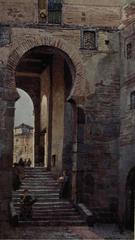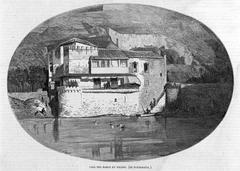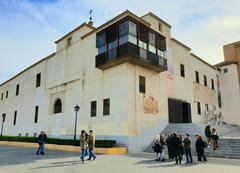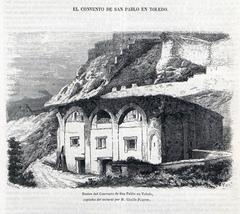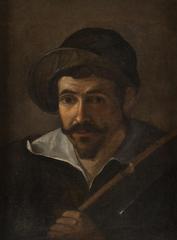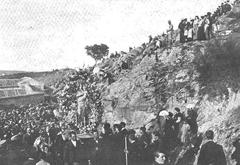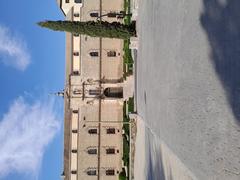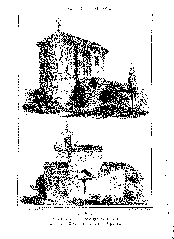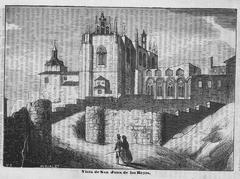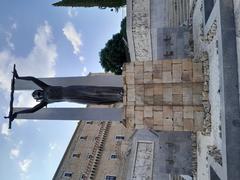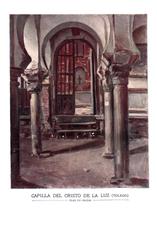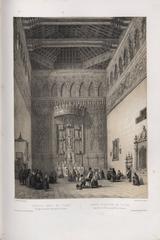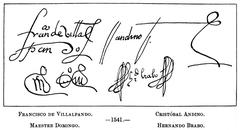
Puerta de Bisagra Toledo: Visiting Hours, Tickets, and Historical Sites Guide
Date: 04/07/2025
Introduction: Gateway to Toledo’s Multicultural Legacy
The Puerta de Bisagra is a monumental gateway that embodies the layered history and cultural richness of Toledo, Spain. Originally constructed as a Moorish fortress gate—Bab al-Saqra—in the 10th century, it has witnessed the city’s transformation through Muslim rule, Christian reconquest, and Renaissance splendor. The gate consists of two main structures: the Puerta Antigua de Bisagra (Old Bisagra Gate) and the Puerta Nueva de Bisagra (New Bisagra Gate), together reflecting Toledo’s reputation as the “City of Three Cultures” where Christian, Muslim, and Jewish influences converge. Today, the Puerta de Bisagra serves as both a literal entrance to Toledo’s UNESCO-listed old town and a symbolic threshold to its vibrant past. This guide details the gate’s fascinating history, architectural highlights, visitor information, accessibility, nearby attractions, and practical tips for an enriching visit (Catedral de Toledo, Spain.info, Meticulous Meanderings).
Contents
- Introduction
- Historical Background
- Architectural Features and Symbolism
- Cultural and Historical Significance
- Visiting Hours and Ticket Information
- Visitor Experience and Practical Information
- Location and Access
- Visitor Facilities
- Guided Tours and Events
- Best Times to Visit
- Accessibility
- Nearby Attractions
- Tips for a Memorable Visit
- Conservation and Restoration
- Frequently Asked Questions (FAQ)
- Conclusion
- Sources and Further Reading
Historical Background
Moorish Origins
The origins of the Puerta de Bisagra trace back to the 10th century, when it was known as Bab al-Saqra or “Gate of the Field,” reflecting its strategic position facing the fertile plains north of Toledo (Catedral de Toledo). Built by the Moors during the Taifa period, the original gate—now referred to as the Puerta Antigua de Bisagra—features horseshoe arches and incorporates Visigothic stones, exemplifying Islamic architectural traditions (Spain.info).
Christian Reconquest and Renaissance Transformation
Following King Alfonso VI’s conquest of Toledo in 1085, the gate was adapted to reflect the city’s new Christian identity while preserving its Moorish heritage (Mis Destinos Favoritos). In the 16th century, under Emperor Charles V, the grand Puerta Nueva de Bisagra was constructed (1540–1576), designed by prominent architects such as Nicolás de Vergara el Viejo and Alonso de Covarrubias (Catedral de Toledo).
Architectural Features and Symbolism
The Puerta Nueva de Bisagra is a masterpiece of Renaissance military architecture. Its outer façade displays two imposing semicircular towers flanking a Roman triumphal arch, crowned by the double-headed imperial eagle of Charles V. The inner courtyard houses statues of Charles V and Saint Eugene, Toledo’s patron, while commemorative plaques recognize the city’s UNESCO status and historic privileges (Catedral de Toledo). The fusion of Moorish horseshoe arches and Renaissance symmetry reflects the city’s multicultural evolution (Historias de Toledo).
Cultural and Historical Significance
The Puerta de Bisagra has long been the main northern entrance to Toledo, controlling access and commerce. As a symbol of the city’s resilience and diversity, it stands as a testament to “convivencia”—the coexistence of Christian, Muslim, and Jewish cultures. The gate’s preservation underscores its role as a living witness to Toledo’s complex history (Meticulous Meanderings, Nomads Travel Guide).
Visiting Hours and Ticket Information
- Visiting Hours: The Puerta de Bisagra is an open-air monument accessible at all times, year-round.
- Tickets: No ticket is required to view and photograph the gate from the outside.
- Guided Tours: Many local operators offer guided walking tours that include the gate and nearby historical sites. Check with the Toledo Tourist Office for schedules and booking information.
Visitor Experience and Practical Information
Location and Access
Located at the northern entrance to Toledo’s old town, the Puerta de Bisagra is easily reached by foot, local bus, or car. Parking is available outside the city walls (toledo-travelguide.com).
Visitor Facilities
Adjacent to the gate is a main Tourist Information Office offering maps, event details, and advice on walking routes (toledo-travelguide.com).
Guided Tours and Events
Numerous walking tours begin at or include the Puerta de Bisagra, providing historical context and efficient routes through the city (spanishnomad.com). Cultural events and historical reenactments may occasionally take place near the gate.
Best Times to Visit
- Season: Spring (April–June) and autumn (September–October) offer pleasant weather.
- Photography: Early mornings and late afternoons provide optimal lighting. The gate is beautifully illuminated at night (Toledo Spain Click).
Accessibility
The area around the gate is paved and accessible for visitors with reduced mobility, but some nearby streets are cobbled or steep. Escalators and accessible routes are available from lower parking areas (toledo-travelguide.com).
Nearby Attractions
- Alcázar of Toledo: Fortress and military museum
- Toledo Cathedral: Gothic masterpiece
- Jewish Quarter: Historic synagogues and the Sephardic Museum
- Mirador del Valle: Panoramic city viewpoint (spanishnomad.com)
Tips for a Memorable Visit
- Start Early: Visit in the morning for fewer crowds.
- Tourist Bracelet: Consider the Toledo Tourist Bracelet for access to multiple monuments (spanishnomad.com).
- Visitor Center: Obtain maps and advice at the nearby Tourist Information Office.
Conservation and Restoration
Significant restoration efforts, particularly following the partial collapse of one tower in 1946, have preserved the gate’s structural integrity (mgallende.com). Visitors are encouraged to respect posted guidelines to help maintain the monument for future generations.
Frequently Asked Questions (FAQ)
Q: Are there entrance fees for visiting Puerta de Bisagra?
A: No, the monument is open to the public free of charge.
Q: What are the best visiting hours?
A: The gate is accessible at all times. Early morning, late afternoon, or evening (when illuminated) are ideal.
Q: Is the site accessible for people with disabilities?
A: The immediate area is accessible, though some adjacent streets may be challenging.
Q: Are guided tours available?
A: Yes, many walking tours of Toledo include the Puerta de Bisagra.
Q: What nearby sites should I visit?
A: The Alcázar, Toledo Cathedral, Jewish Quarter, and city viewpoints are all within walking distance.
Conclusion
The Puerta de Bisagra is not just a gateway but a living symbol of Toledo’s multicultural legacy, architectural splendor, and enduring spirit. Whether you admire its imposing towers, trace its Moorish origins, or embark on a walking tour through the city’s historic core, the gate offers an unparalleled introduction to Toledo’s wonders. For real-time updates, guided routes, and more travel tips, download the Audiala app and explore the city with confidence.
Recommended Visuals
- High-resolution images of both the Old and New Puerta de Bisagra, highlighting architectural details.
- An interactive map showing the gate’s position relative to Toledo’s main attractions.
- Virtual tour links for an immersive preview.
Sources and Further Reading
- Catedral de Toledo
- Spain.info
- Meticulous Meanderings
- mgallende.com
- Nomads Travel Guide
- Toledo Travel Guide





